Premium Only Content
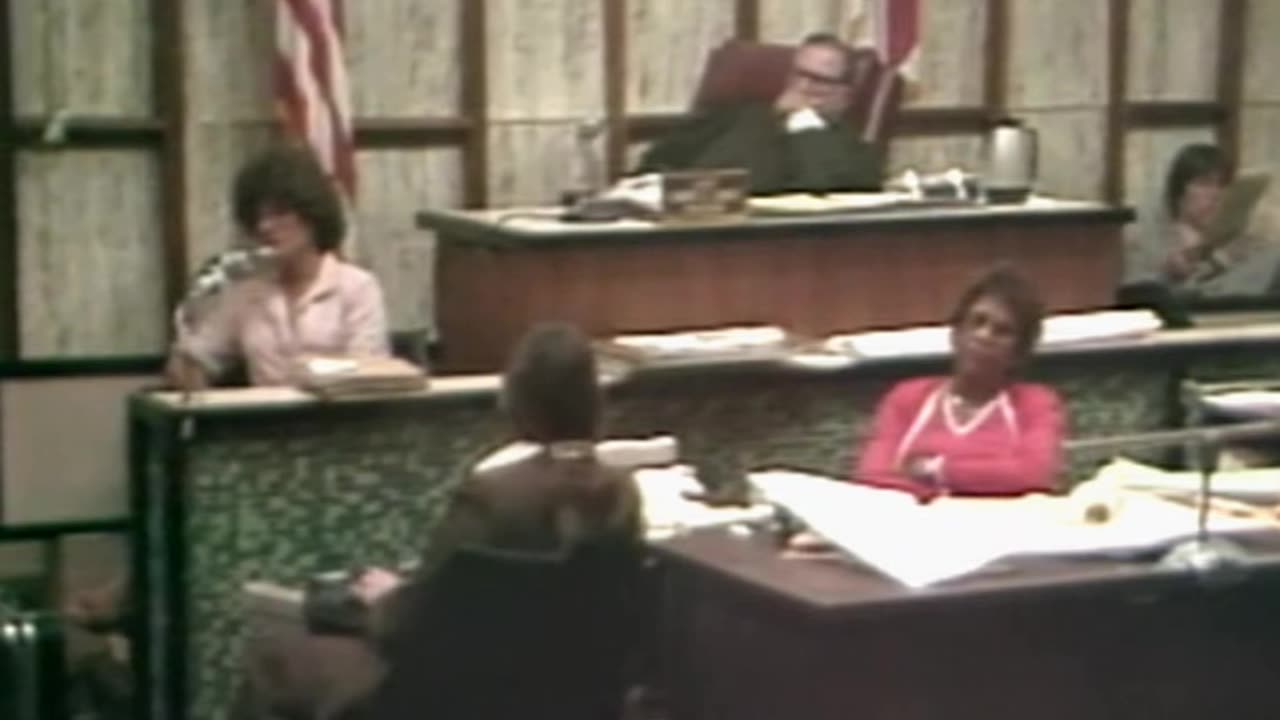
The Ted Bundy Trials - Part 3 - (July 16, 1979 to July 24, 1979)
The dark side of history: https://thememoryhole.substack.com/
On August 16, 1975, Bundy was arrested by Utah Highway Patrol officer Bob Hayward in Granger, another Salt Lake City suburb.[174] Hayward observed Bundy cruising a residential area in his Volkswagen Beetle during the pre-dawn hours, and fleeing at high speed after seeing the patrol car.[175] He noticed that the Volkswagen's front passenger seat had been removed and placed on the rear seats, and searched the car. He found a ski mask, a second mask fashioned from pantyhose, a crowbar, handcuffs, trash bags, a coil of rope, an ice pick, and other items initially assumed to be burglary tools. Bundy explained that the ski mask was for skiing, he had found the handcuffs in a dumpster, and the rest were common household items.[176] However, Detective Jerry Thompson remembered a similar suspect and car description from the November 1974 DaRonch kidnapping, and Bundy's name from Kloepfer's phone call a month later. In a search of Bundy's apartment, police found a guide to Colorado ski resorts with a checkmark by the Wildwood Inn,[177] and a brochure that advertised the Viewmont High School play in Bountiful, where Kent had disappeared.[178] The police did not have sufficient evidence to detain Bundy, so he was released on his own recognizance. Bundy later said that searchers missed a hidden collection of Polaroid photographs of his victims, which he destroyed after he was released.[179]
Salt Lake City police placed Bundy on 24-hour surveillance, and Thompson flew to Seattle with two other detectives to interview Kloepfer. She told them that in the year prior to Bundy's move to Utah, she had discovered objects that she "couldn't understand" in her house and in Bundy's apartment. These items included crutches, a bag of plaster of Paris that he admitted stealing from a medical supply house, and a meat cleaver that was never used for cooking. Additional objects included surgical gloves, an Oriental knife in a wooden case that he kept in his glove compartment, and a sack full of women's clothing.[180] Bundy was perpetually in debt, and Kloepfer suspected that he had stolen almost everything of significant value that he possessed. When she confronted him over a new TV and stereo, he warned her, "If you tell anyone, I'll break your fucking neck."[181] She said Bundy became "very upset" whenever she considered cutting her hair, which was long and parted in the middle. She would sometimes awaken in the middle of the night to find him under the bed covers with a flashlight, examining her body. He kept a lug wrench, taped halfway up the handle, in the trunk of her car—another Volkswagen Beetle, which he often borrowed—"for protection". The detectives confirmed that Bundy had not been with Kloepfer on any of the nights during which the Pacific Northwest victims had vanished, nor on the day Ott and Naslund were abducted from Lake Sammamish State Park.[182] Shortly thereafter, Kloepfer was interviewed by Seattle homicide detective Kathy McChesney, and learned of the existence of Diane Edwards and her brief engagement to Bundy around Christmas 1973.[183]
Bundy is facing right in the first photo and facing front in the second. He has medium long hair and is wearing a turtleneck sweater.
Bundy's 1975 Utah mugshots
In September, Bundy sold his Volkswagen Beetle to a Midvale teenager.[184] Utah police impounded it, and FBI technicians dismantled and searched it. They found hairs matching samples obtained from Campbell's body.[185] Later, they also identified hair strands "microscopically indistinguishable" from those of Smith and DaRonch.[186] FBI lab specialist Robert Neill concluded that the presence of hair strands in one car matching three different victims who had never met one another would be "a coincidence of mind-boggling rarity".[187]
On October 2, detectives put Bundy into a lineup. DaRonch immediately identified him as "Officer Roseland", and witnesses from Bountiful recognized him as the stranger at the Viewmont High School auditorium.[188] There was insufficient evidence to link him to Kent, whose body had not yet been found,[189] but more than enough evidence to charge him with aggravated kidnapping and attempted criminal assault in the DaRonch case. He was freed on $15,000 bail, paid by his parents,[190] and spent most of the time between indictment and trial in Seattle, living in Kloepfer's house. Seattle police had insufficient evidence to charge him in the Pacific Northwest murders, but kept him under close surveillance. "When Ted and I stepped out on the porch to go somewhere," Kloepfer wrote, "so many unmarked police cars started up that it sounded like the beginning of the Indy 500."[191]
In November, the three principal Bundy investigators—Jerry Thompson from Utah, Robert Keppel from Washington, and Michael Fisher from Colorado—met in Aspen, Colorado, and exchanged information with thirty detectives and prosecutors from five states.[192] While officials left the meeting, which was later referred to as the Aspen Summit, convinced that Bundy was the murderer they sought, they agreed that more hard evidence would be needed before he could be charged with any of the murders.[193]
In February 1976, Bundy stood trial for the DaRonch kidnapping. On the advice of his attorney, John O'Connell, he waived his right to a jury due to the negative publicity surrounding the case. After a four-day bench trial and a weekend of deliberation, Judge Stewart Hanson Jr. found him guilty of kidnapping and assault.[194][166][195] In June, he was sentenced to one to 15 years in the Utah State Prison.[190] In October, he was found hiding in bushes in the prison yard carrying an "escape kit"—road maps, airline schedules, and a social security card—and spent several weeks in solitary confinement.[196] Later that month, Colorado authorities charged him with Campbell's murder. After a period of resistance, he waived extradition proceedings and was transferred to Aspen in January 1977.[197][198]
On June 7, 1977, Bundy was transported 40 miles (64 km) from the Garfield County jail in Glenwood Springs to Pitkin County Courthouse in Aspen for a preliminary hearing. He had elected to serve as his own attorney, and as such, was excused by the judge from wearing handcuffs or leg shackles.[200] During a recess, he asked to visit the courthouse's law library to research his case. While shielded from his guards' view behind a bookcase, he opened a window and jumped to the ground from the second story, injuring his right ankle as he landed.
After shedding an outer layer of clothing, Bundy limped through Aspen as roadblocks were being set up on its outskirts, then hiked south onto Aspen Mountain. Near its summit he broke into a hunting cabin and stole food, clothing, and a rifle.[201] The following day, he left the cabin and continued south toward the town of Crested Butte, but became lost in the forest. For two days he wandered aimlessly on the mountain, missing two trails that led downward to his intended destination. On June 10, he broke into a camping trailer on Maroon Lake, 10 miles (16 km) south of Aspen, taking food and a ski parka; however, instead of continuing southward, he walked back north toward Aspen, eluding roadblocks and search parties along the way.[202] Three days later, he stole a car at the edge of Aspen Golf Course. Cold, sleep-deprived, and in constant pain from his sprained ankle, Bundy drove back into Aspen, where two police officers noticed his car weaving in and out of its lane and pulled him over. He had been a fugitive for six days.[203] In the car were maps of the mountain area around Aspen that prosecutors were using to demonstrate the location of Campbell's body (as his own attorney, Bundy had rights of discovery), indicating that his escape had been planned.[204]
Black-and-white photo of a man with curly hair
1977 photograph—taken shortly after first escape and recapture[205]—from Bundy's FBI Ten Most Wanted Fugitives poster
Back in jail in Glenwood Springs, Bundy ignored the advice of friends and legal advisors to stay put. The case against him, already weak at best, was deteriorating steadily as pretrial motions consistently resolved in his favor and significant bits of evidence were ruled inadmissible.[206] "A more rational defendant might have realized that he stood a good chance of acquittal, and that beating the murder charge in Colorado would probably have dissuaded other prosecutors ... with as little as a year and a half to serve on the DaRonch conviction, had Ted persevered, he could have been a free man."[207] Instead, Bundy assembled a new escape plan. He acquired a detailed floor plan of the Garfield County jail and a hacksaw blade from other inmates. He accumulated $500 in cash, smuggled in over a six-month period by visitors, Boone in particular.[208] During the evenings, while other prisoners were showering, he sawed a hole about one square foot (0.093 m2) between the steel reinforcing bars in his cell's ceiling. Having lost 35 pounds (16 kg), he was able to wriggle through and explore the crawl space above[209] in the weeks that followed. Multiple reports from an informant of movement within the ceiling during the night were not investigated.[210]
By late 1977, Bundy's impending trial had become a cause célèbre in the small town of Aspen, and Bundy filed a motion for a change of venue to Denver.[211] On December 23, the Aspen trial judge granted the request, but to Colorado Springs, where juries had historically been hostile to murder suspects.[212] On the night of December 30, with most of the jail staff on Christmas break and nonviolent prisoners on furlough with their families,[213] Bundy piled books and files in his bed, covered them with a blanket to simulate his sleeping body, and climbed into the crawl space. He broke through the ceiling into the apartment of the chief jailer — who was out for the evening with his wife[214] — changed into street clothes from the jailer's closet, and walked out the front door to freedom.[215]
After stealing a car, Bundy drove eastward out of Glenwood Springs, but the car soon broke down in the mountains on Interstate 70. A passing motorist gave him a ride into Vail, 60 miles (97 km) to the east. From there he caught a bus to Denver, where he boarded a morning flight to Chicago. Back in Glenwood Springs, the jail's skeleton crew did not discover the escape until noon on December 31, more than seventeen hours later. By then, Bundy was already in Chicago.[216]
From Chicago, Bundy traveled by train to Ann Arbor, Michigan, where he was present in a local tavern on January 2.[217] Five days later, he stole a car and drove south to Atlanta, where he boarded a bus and arrived in Tallahassee, Florida, on the morning of January 8. He stayed for one night at a hotel before he rented a room under the alias Chris Hagen at a boarding house near the Florida State University (FSU) campus.[218] Bundy later said that he initially resolved to find legitimate employment and refrain from further criminal activity, knowing he could probably remain free and undetected in Florida indefinitely as long as he did not attract the attention of police;[219] but his lone job application, at a construction site, had to be abandoned when he was asked to produce identification.[220] He reverted to his old habits of shoplifting and stealing money and credit cards from women's wallets left in shopping carts at local grocery stores.[221]
A Chi Omega sorority house resident gazes from a window of the premises hours after Bundy's January 15, 1978 rampage
In the early hours of January 15, 1978—one week after his arrival in Tallahassee—Bundy entered FSU's Chi Omega sorority house through a rear door with a faulty locking mechanism.[222] Beginning at about 2:45 a.m. he bludgeoned Margaret Elizabeth Bowman, 21, with a piece of oak firewood as she slept, then garrotted her with a nylon stocking.[223] He then entered the bedroom of 20-year-old Lisa Janet Levy and beat her unconscious, strangled her, tore one of her nipples, bit deeply into her left buttock, and sexually assaulted her with a hair mist bottle.[224] In an adjoining bedroom he attacked Kathy Kleiner, 21, breaking her jaw and deeply lacerating her shoulder; and Karen Chandler, 21, who suffered a concussion, broken jaw, loss of teeth, and a crushed finger.[225] Chandler and Kleiner survived the attack; Kleiner attributed their survival to automobile headlights illuminating the interior of their room and frightening away the attacker.[226][227]
Tallahassee detectives determined that the four attacks took place in a total of less than 15 minutes, within earshot of more than 30 witnesses who heard nothing.[222] After leaving the sorority house, Bundy broke into a basement apartment eight blocks away and attacked 21-year-old FSU student Cheryl Thomas, dislocating her shoulder and fracturing her jaw and skull in five places. She was left with permanent deafness in her left ear and equilibrium damage that ended her dance career.[228] On Thomas's bed, police found a semen stain and a pantyhose "mask" containing two hairs "similar to Bundy's in class and characteristic".[229][230]
Kimberly Leach
On February 8, Bundy drove 150 miles (240 km) east to Jacksonville in a stolen FSU van. In a parking lot he approached 14-year-old Leslie Parmenter, the daughter of the Jacksonville Police Department's Chief of Detectives, identifying himself as "Richard Burton, Fire Department", but retreated when Parmenter's older brother arrived and confronted him.[231] That afternoon, he backtracked 60 miles (97 km) westward to Lake City. At Lake City Junior High School the following morning, 12-year-old Kimberly Dianne Leach was summoned to her homeroom by a teacher to retrieve a forgotten purse; she never returned to class. Seven weeks later, after an intensive search, her partially mummified remains were found in a pig farrowing shed near Suwannee River State Park, 35 miles (56 km) northwest of Lake City.[232][233] Forensic experts surmised that Leach had been raped before having her throat cut and her genitals mutilated with a knife.[234][235]
On February 12, with insufficient cash to pay his overdue rent and a growing suspicion that police were closing in on him,[236] Bundy stole a car and fled Tallahassee, driving westward across the Florida Panhandle. Three days later, at around 1:00 a.m., he was stopped by Pensacola police officer David Lee near the Alabama state line after a "wants and warrants" check showed his Volkswagen Beetle was stolen.[237] When told he was under arrest, Bundy kicked Lee's legs out from under him and took off running. Lee fired two warning shots, then gave chase and tackled him. The two struggled over Lee's gun before the officer finally subdued and arrested Bundy.[238] In the stolen vehicle were three sets of IDs belonging to female FSU students, 21 stolen credit cards and a stolen television set.[239] Also found were a pair of dark-rimmed non-prescription glasses and a pair of plaid slacks, later identified as the disguise worn by "Richard Burton, Fire Department" in Jacksonville.[240]
As Lee transported his suspect to jail, unaware that he had just arrested one of the FBI's Ten Most Wanted Fugitives, he heard Bundy say, "I wish you had killed me."[241]
-
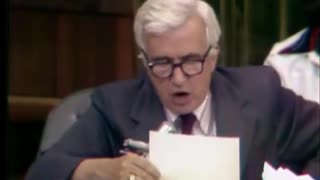 3:50:14
3:50:14
The Memory Hole
7 months agoNixon Impeachment Hearings Day 2 (1974-07-24)
1.25K -
 12:15
12:15
Nikko Ortiz
17 hours agoMonday Gun Fails
61.2K12 -
 8:19
8:19
MattMorseTV
16 hours ago $10.48 earnedTrump is ACTUALLY DOING IT.
61.2K46 -
 5:40
5:40
Sugar Spun Run
23 hours ago $0.80 earnedNutella Brownies
9.66K -
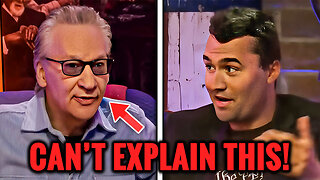 8:46
8:46
Faith Frontline
15 hours agoBill Maher STUNNED as Charlie Kirk Proves God Exists
10.3K9 -
 LIVE
LIVE
FyrBorne
10 hours ago🔴Warzone M&K Sniping: On the Hunt For The Next Fun Builds
78 watching -
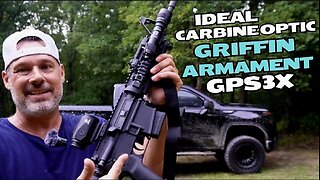 7:11
7:11
MudandMunitions
12 hours agoNY Legal, Still LETHAL! Colt M4 + Griffin Armament GPS3X Prism Sight! NIGHT SHOOT
8.58K3 -
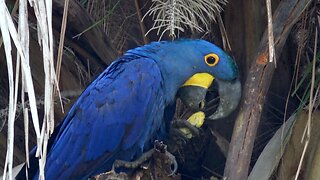 2:11
2:11
WildCreatures
2 days ago $0.47 earnedBrilliant Blue Hyacinth Macaw Eats Nuts With Impressive Dexterity
8.74K5 -
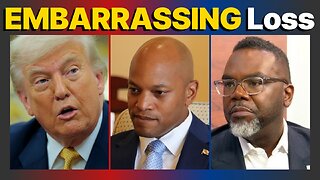 29:45
29:45
DeVory Darkins
15 hours ago $5.04 earnedDemocrat Governor suffers EMBARRASSING LOSS to Trump as ICE takes Garcia into custody
16.7K59 -
 24:50
24:50
Bitcoin.com
16 hours agoEthereum hit an ATH this weekend | The Weekly Recap for Aug 25
12.7K